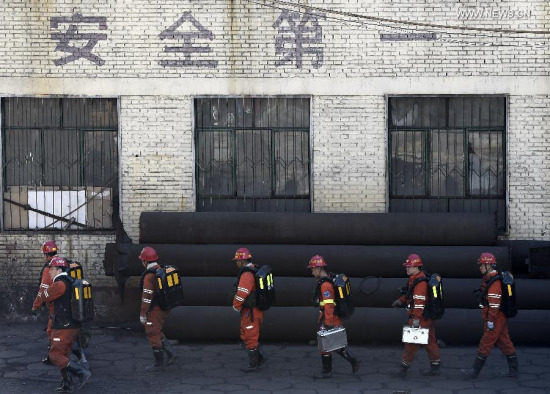.JPG/800px-Santa_Marija_Addolorata_Cemeter_(7).JPG)
They're stacked in silver tubes. One on top of another. They are sealed in black plastic bags with marker-scribbled signs hung at their feet: Unknown Number 7, Unknown Number 10. Here, we can count 24 nameless corpses, all unknown and unidentified.
"They are all adult males, except one teenager," says Dr. David Grima.
They were on deck and died at sea, in the open wind, unlike those who were trapped below deck. We don't know their names, but in reality we know them very well. We have already seen them, followed them, listened to them, admired them for a strength that we don't have.
And we know how this would-be passage to Europe ends, here on the continent's extreme southern stretch, at the Mater Dei hospital's morgue on the island nation of Malta. Authorities now say as many as 800 people were killed in the sinking of the boat over the weekend, the worst maritime disaster in Europe since World War II.
Mater Dei (Mother of God) is the main hospital on the island, a modern building tucked among a tangle of streets. The mortuary's refrigerator has capacity for 65 bodies at any one time. Today a retiree suffered a fatal heart attack and three chronically ill patients from a ward died, joining the 23 men and teenagers who were fished out of the Mediterranean Sea.
"Sub-Saharan," says Dr. Grima. "Eritreans and Somalis, probably." The doctor, who wears an ID card around his neck and a blue shirt, is head of the morgue. He is the guardian of the dead who have no names.
"Today we took their DNA and in two days we will perform autopsies," he says. "Over the weekend we will give them an inter-religious burial, like we did last time."
Though the world is now finally paying attention, everything seen here has already happened before. The 24 bodies will go to the Addolorata cemetery where they will be interred next to the 21 who died in the Oct. 11 2013 sinking, and an Eritrean who tried to escape from Malta's reception center on a small boat, but returned lifeless because of the strong currents.
"There is a specific part of the cemetery reserved for migrants," says Grima. That is where they bury these victims without names, and without religion to avoid mistakes.
The day after the wreck in 2013, we came to this hospital for the first time and the atmosphere was very different — in addition to the dead, there were survivors. Everyone was grabbing arms, pleading to make a phone call. They were shouting the names of their relatives in the hopes that answers would come. "Where is my mother?" "My son, my son … please tell me that he was brought to Lampedusa."
Where is Europe?
There was a Syrian boy who was frothing with rage, standing at the door, wearing a baseball cap turned backwards. His name was Molhake Al Roasrn and he made his sea journey from the Libyan port city of Zuwarah. "The Libyans began firing, wounding three people. Because of the panic, everyone came above deck and the ship overturned …"
Perhaps he lost some relatives in the wreck but that was not the reason for his anger. "This is not Europe," he kept repeating. "Yes, yes, you're in Europe now," we tried to console him. "It's not true. I wanted to go to Italy, then to Sweden. That is Europe."
A European Union nation, Malta is a quiet island with a mild climate. There are retired Italians who read newspapers in the sun, groups of English tourists, colonial-style hotels and school classes on field trips. For the immigrants who arrive here, it's a curse. "I didn't undertake that journey to end up here," said Molhake.
Yesterday morning at 9 a.m., the Italian Coast Guard's Gregoretti ship docked at Valletta's port, not far from one particularly large and luxurious yacht with a helicopter on board. Sitting on the main deck of the Italian military ship were survivors, wearing colorful jackets and lucky tracksuits. They watched the corpses being brought ashore, one by one, towards a black van with a cross on its side. "After the initial euphoria at being saved, the ship fell silent," said Captain Gianluigi Bove. "It was when they realized we would be carrying the dead too."
Everybody knows the end of this story too well: the perpetual condemnation to oblivion, an eternal distance from loved ones, the desire not be recognized anymore. In the face of the sheer scale of the latest tragedy, Mater Dei hospital chief Ivan Falzon posted a message on Facebook. "No one even knows who died. Nobody will bring flowers. So let us, as their friends and relatives would. We can try to at least make their deaths gentle."
This is why people are coming to the front of the morgue. People like Gloria Bugeja, who works with stray dogs. "It hurts to think that nobody is mourning these people," she says. "What do their parents know?" She lays a camellia beside the wreath that the Minister for Justice placed down. By 6 p.m. on Monday, eighteen bouquets of flowers had been placed, and at least one note: "For the unidentified dead in Mater Dei, hoping for an eternal paradise. Rest in peace."
Wednesday 22 April 2015
http://www.worldcrunch.com/migrant-lives/mediterranean-graveyard-the-nameless-dead-of-malta/migrants-lampedusa-italy-immigration-coast-guard/c17s18653/


